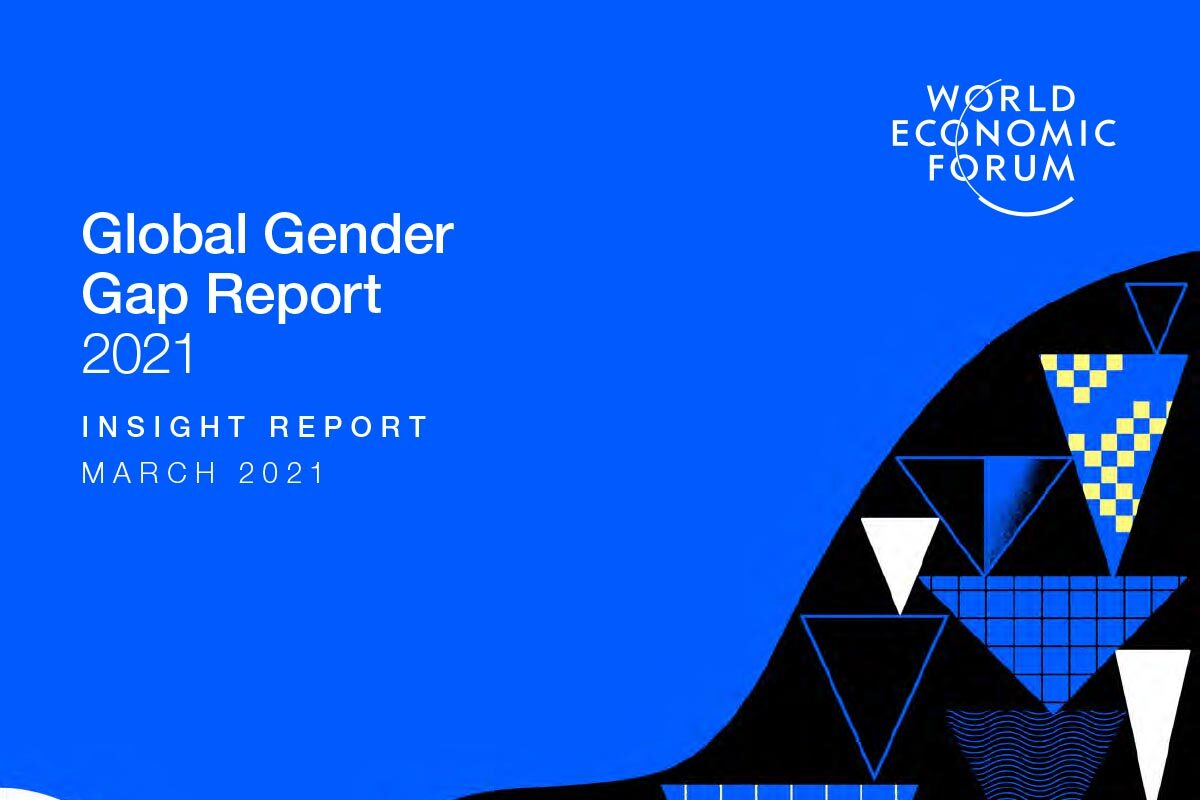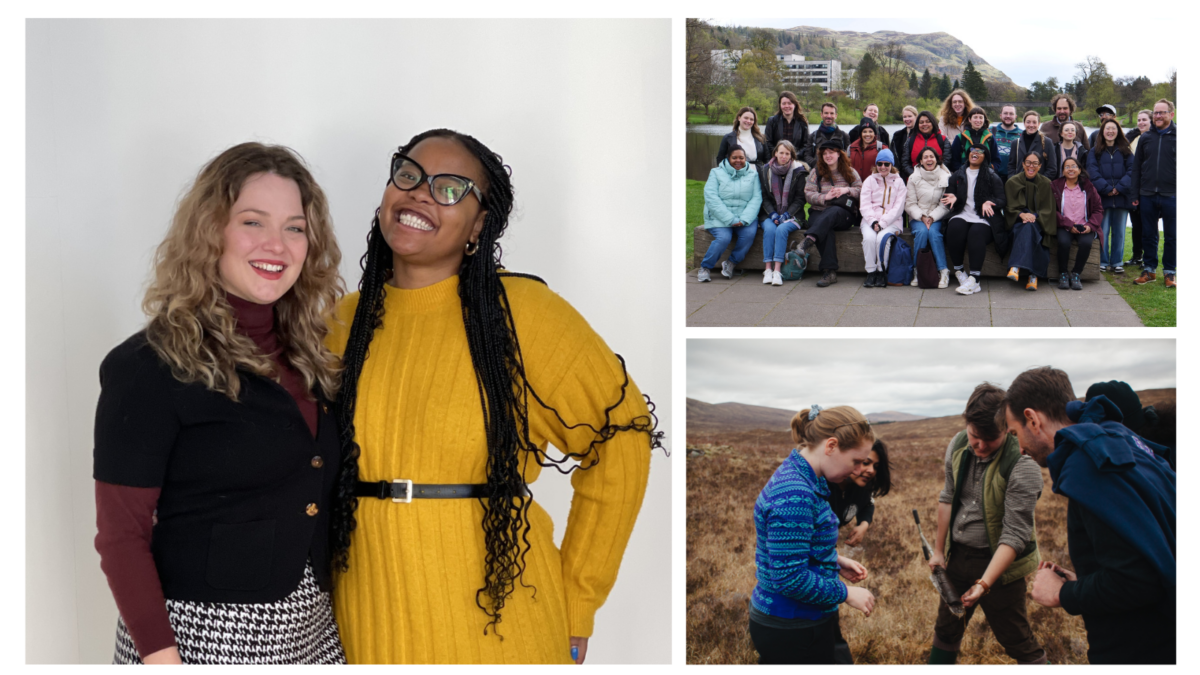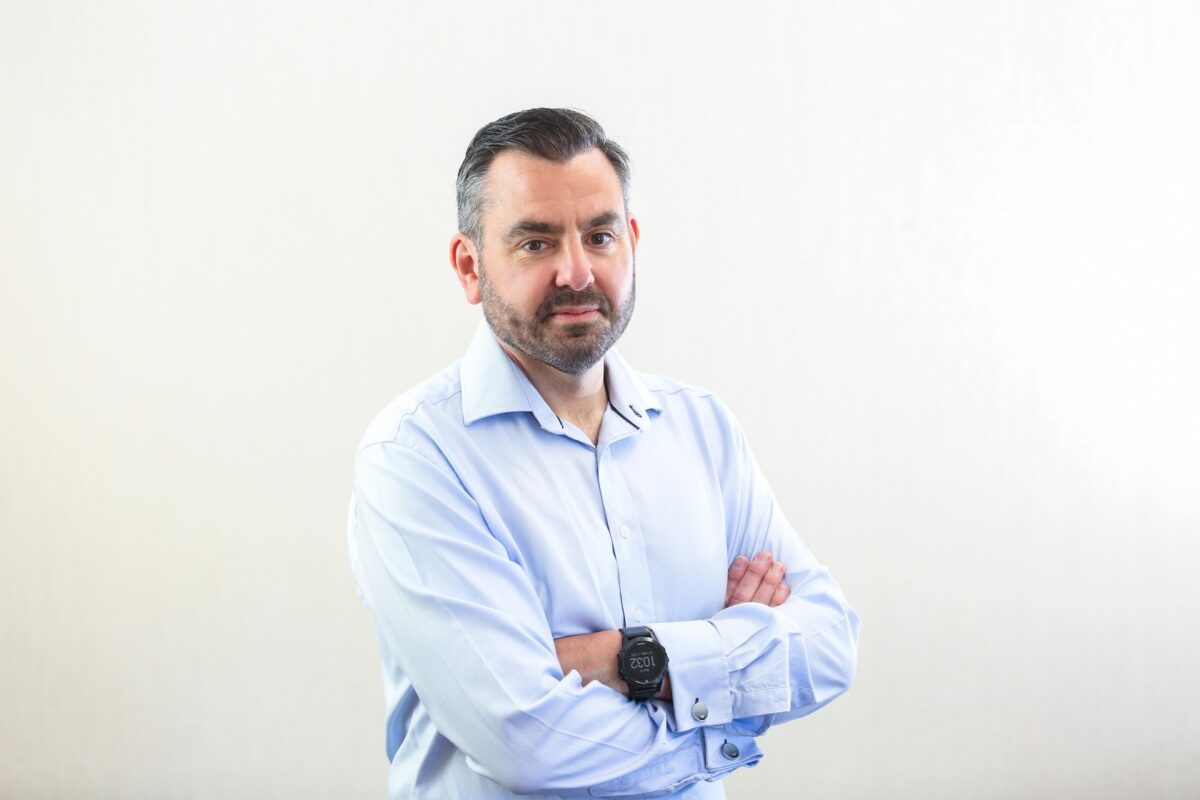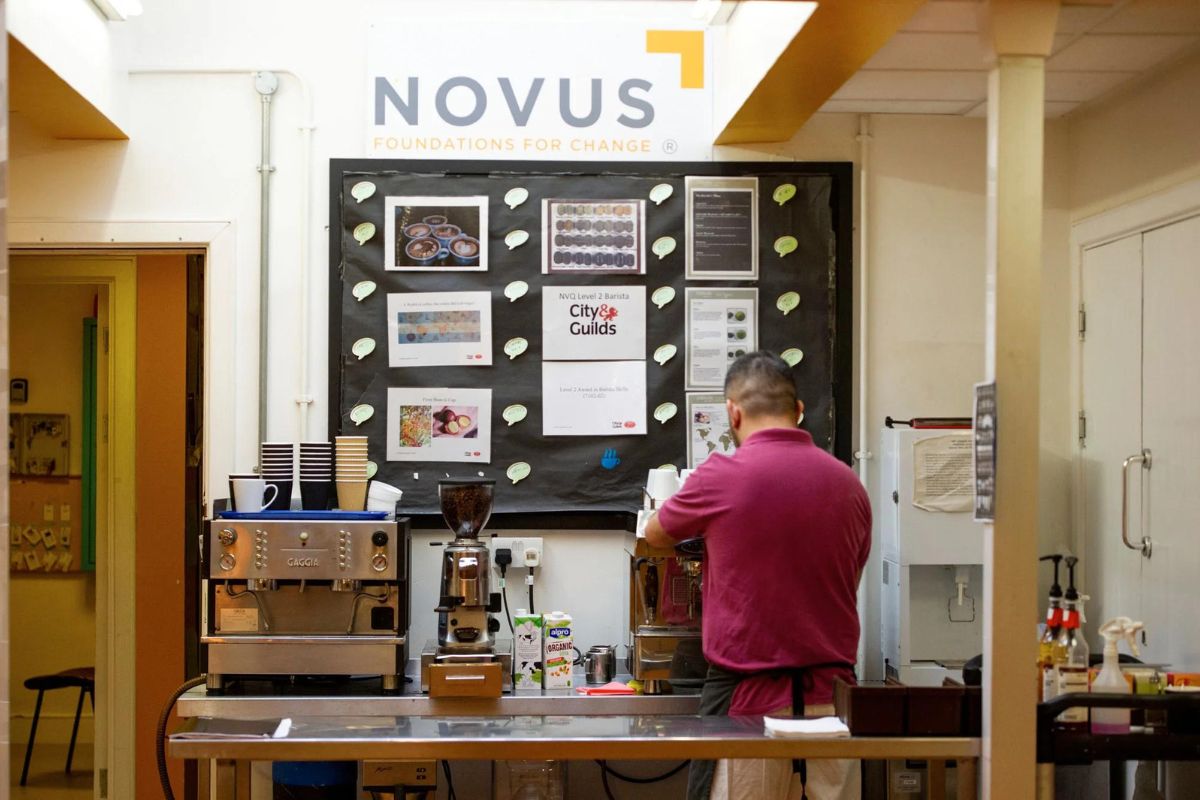Pandemic Pushes Back Gender Parity by a Generation, WEF Report Finds

Another generation of women will have to wait for gender parity, according to the World Economic Forum’s Global Gender Gap Report 2021.
As the impact of the COVID-19 pandemic continues to be felt, closing the global gender gap has increased by a generation from 99.5 years to 135.6 years.
Progress towards gender parity is stalling in several large economies and industries. This is partly due to women being more frequently employed in sectors hardest hit by lockdowns combined with the additional pressures of providing care at home.
The report, now in its 15th year, benchmarks the evolution of gender-based gaps in four areas: economic participation and opportunity; educational attainment; health and survival; and political empowerment. It also examines the drivers of gender gaps and outlines the policies and practices needed for a gender-inclusive recovery.
The deterioration in 2021 is partly attributed to a widening political gender gap in several large population countries. Despite over half of the 156 indexed countries registering an improvement, women still hold only 26.1% of parliamentary seats and 22.6% of ministerial positions worldwide. On its current trajectory, the political gender gap is expected to take 145.5 years to close, compared to 95 years in the 2020 edition of the report, an increase of over 50%.
The economic gender gap has seen only a marginal improvement since the 2020 edition and is expected to take another 267.6 years to close. The slow progress is due to opposing trends – while the proportion of women among skilled professionals continues to increase, income disparities persist and few women are represented in managerial positions.
Although these findings are sobering, gender gaps in education and health are nearly closed. In education, while 37 countries have reached gender parity, it will take another 14.2 years to completely close this gap due to slowing progress. In health, over 95% of this gender gap has been closed, registering a marginal decline since last year.
“The pandemic has fundamentally impacted gender equality in both the workplace and the home, rolling back years of progress. If we want a dynamic future economy, it is vital for women to be represented in the jobs of tomorrow. Now, more than ever, it is crucial to focus leadership attention, commit to firm targets and mobilize resources. This is the moment to embed gender parity by design into the recovery,” said Saadia Zahidi, Managing Director, World Economic Forum.
COVID-19’s impact on women

The pandemic has had a more negative impact on women than men, with women losing jobs at higher rates (5% vs 3.9% among men, International Labour Organization), partly due to their disproportionate representation in sectors directly disrupted by lockdowns, such as the consumer sector. Data from the United States also indicates that women from historically disadvantaged racial and ethnic groups are worst affected.
Data from an Ipsos survey suggests that when care establishments closed, housework, childcare and eldercare responsibilities fell disproportionately on women, contributing to higher levels of stress and lower levels of productivity.
As the job market recovers, LinkedIn data shows that women are being hired at a slower rate in multiple industries. They are also less likely to be hired for leadership roles, resulting in a reversal of up to two years’ progress.
Women’s representation in emerging jobs
Sectors with historically low representation of women are also those with fast-growing “jobs of tomorrow”. In cloud computing, for example, women make up 14% of the workforce; in engineering, 20%; and in data and artificial intelligence, 32%; and it is more difficult for women to switch into these emerging roles than men. The report offers new metrics for tracking progress on closing gender gaps in the jobs of tomorrow. While care and education roles also offer areas of future growth and women have stronger representation, they are often lower-paid roles than other jobs of tomorrow.
“Women aren’t well represented in the majority of fast-growing roles, which means we are storing up even bigger gender representation problems as we emerge from the pandemic. These roles play a significant part in shaping all aspects of technology and how it is deployed in the world. We simply have to have women’s voices and perspectives represented at this foundational stage, especially as digitization is accelerating. Companies and governments need to build diversity, equity and inclusion into their plans for recovery. Assessing candidates on their skills and potential, and not just their direct work experience and formal qualifications, is central to that. Skills-based hiring is key if we’re going to make our economies and societies more inclusive,” said Sue Duke, Head of Global Public Policy, at LinkedIn.
“The pandemic has exasperated the inequities on household responsibilities, compensation mechanisms and employment opportunities, even more so among specific groups of women including care-givers and those in part-time and inflexible work environments. The challenge for organisations is not just how to recover from the pandemic but to address the long-term systematic issues that create inequity across the workforce”, said Natalie Lacey Chief Operating Officer, Global Affairs, IPSOS.
How to shape a gender equal recovery
The pandemic’s combined effect of accelerated automation, the growing “double shift” of work and care, in parallel with other labour market dynamics such as occupational segregation, are likely to have a long-term impact on economic opportunities for women, risking inferior re-employment prospects and a persistent drop in income.
The report offers ways for countries to work towards closing their gender gaps. These include further investment in the care sector and equitable access to care leave for working men and women, policies and practices that proactively focus on overcoming occupational segregation by gender, effective mid-career skills-development policies for women, and managerial practices that embed sound, unbiased hiring and promotion practices.
The global gender gap in 2021
For the 12th time, Iceland is once again the most gender-equal country in the world. The top 10 includes:
The five most improved countries in the overall index in 2021 are Lithuania, Serbia, Timor-Leste, Togo and United Arab Emirates, having narrowed their gender gaps by at least 4.4 percentage points or more. Timor-Leste and Togo also managed to close their economic gap by at least 17 full percentage points in the year. Three new countries have been assessed this year for the first time: Afghanistan (156th), Guyana (53rd) and Niger (138th).
Western Europe continues to be the best-performing region and has further improved, with 77.6% of its overall gender gap now closed. At this rate, it will take 52.1 years to close the gender gap. Six of the top 10 countries in the index are from this region and 2021’s improvement is driven by the fact that 17 of the 20 countries in the region have at least marginally improved their performance.
North America (76.4%), comprising Canada and the United States, is the most improved region, with an increase of almost 3.5%. As a result, it will take 61.5 years to close the gender gap here. A significant part of this year’s progress is related to improvements in the political gender gap, having narrowed from 18.4% to 33.4%.
Latin America and the Caribbean (72.1%) has seen 15 of the 25 countries in the region improving their overall scores. Belize, El Salvador and Suriname stand out for closing their gender gap by over 2.3 percentage points in one year. At this rate, it will take the region 68.9 years to close the gap.
Eastern Europe and Central Asia (71.2%) lags behind Western Europe not only on the proportion closed but also on the pace of progress. As such, the estimated time to close the gender gap is 134.7 years, more than twice that of Western Europe (52.1 years). The regional average also masks large disparities between countries on closing the political gender gap. While Serbia, Lithuania, Albania and Latvia have closed at least 30% of this gap, the Russian Federation and Azerbaijan have closed less than 10% of their gaps.
East Asia and the Pacific (68.9%) is one of the three most-improved regions, having narrowed its gender gaps on three of the four sub-indexes (economic, education, health) but regressing on the political gender gap. On its current trajectory, it will take another 165.1 years to completely close the gap, almost 30 years longer than the global average.
Sub-Saharan Africa (67.2%) has made slow progress, such that it will take 121.7 years to close the gender gap. More than half of the countries in the region (20 out of 34) made progress towards gender parity in the past year, though only Namibia and Rwanda have closed at least 80% of their gaps.
South Asia is the second-lowest performer, with 62.3% of its overall gender gap closed and progress going into reverse in the past year. A decline of 3.8 percentage points means that it is now expected to take 195.4 years to close the gender gap. With its large population and poor score, India’s performance has a substantial impact on the region’s overall score.
The Middle East and North Africa region continues to have the largest gender gap (39.1%) yet to be closed. Despite a slight improvement (+0.5 percentage points), progress is slow, and it will take 142.4 years to close the gender gap, due in large part to the wide economic gender gap, with just 31% of women taking part in the labour force.
How the Forum is working on closing the gender gap
The Global Gender Gap Report is a publication of the World Economic Forum’s Centre for Shaping the Future of the New Economy and Society. The centre supplements its research into gender gaps with a growing portfolio of initiatives to drive progress.
Closing the Gender Gap Accelerators work with advanced and developing economies to create public-private collaborations for rapid acceleration to economic parity, focusing on increasing women’s participation in the workforce, closing the gender pay gap and helping more women advance into leadership roles and develop in-demand skills. The Hardwiring Gender Parity in the Future of Work initiative works with business to embed parity into the fastest growing emerging professions.
Working together, stakeholders deepen their understanding of complex issues, shape new models and standards and drive scalable, collaborative action for systemic change. Over 500 of the world’s leading companies, international, civil society and academic organizations, and governments currently work with the centre, aiming to reach 1 billion people with improved economic opportunities.
More than a Lifetime Away: World Faces 100-Year Wait for Gender Parity

#GenderGap20 – None of us will see gender parity in our lifetimes, and nor likely will many of our children
17th Dec 2019: That’s the sobering finding of the World Economic Forum’s Global Gender Gap Report 2020, published today (17 Dec), which reveals that gender parity will not be attained for 99.5 years.
While an improvement on 2018 – when the gap was calculated to take 108 years to close – it still means parity between men and women across health, education, work and politics will take more than a lifetime to achieve.
Men’s expected annual salary after 9 years’ experience equal to women’s expected throughout career
Women need nine years of prospective experience to reach the expected wage level that males anticipate to receive upon graduation, research by the University of Cologne reveals. In turn, males expect to earn an average salary of 49,000 Euros after nine years’ experience, this is almost as high as the maximum wage that women expect to earn throughout their entire careers (51,000 Euros).
Professor Pia Pinger found that even as students, women always expect to earn substantially less than their male counterparts, mostly due to factors relating to occupational sorting and negotiation styles. This wage gap in expectations mimics the actual wage gap between men and women. The similarity between these two suggests that expectations reflect the expected outcome of future wage setting.
As women expect lower wages, they leave little scope for negotiation, therefore are more likely to be pushed down to their reservation wage. Whereas men are much bolder and enter negotiations with higher numbers.
“The difference in wage negotiation strategies may explain why there is a strong link between expected and actual wages. This difference prompts the question of whether a bolder negotiation style pays off, especially for women,” says Professor Pinger.
She proposes that negotiation training might be an effective measure to reduce the gender wage gap and that such measures could be more effective than policies that encourage women to enter male-dominated fields.
These findings come from a study on 15,348 students and 1,155 graduates.
According to the 2020 WEF report, this year’s improvement can largely be ascribed to a significant increase in the number of women in politics. The political gender gap will take 95 years to close, compared to 107 years last year. Worldwide in 2019, women now hold 25.2% of parliamentary lower-house seats and 21.2% of ministerial positions, compared to 24.1% and 19% respectively last year.
Politics, however, remains the area where least progress has been made to date. With Educational Attainment and Health and Survival much closer to parity on 96.1% and 95.7% respectively, the other major battlefield is economic participation. Here, the gap widened in 2019 to 57.8% closed from 58.1% closed in 2018. Looking simply at the progress that has been made since 2006 when the World Economic Forum first began measuring the gender gap, this economic gender gap will take 257 years to close, compared to 202 years last year.
Economic Gap Widening
The report attributes the economic gender gap to a number of factors. These include stubbornly low levels of women in managerial or leadership positions, wage stagnation, labour force participation and income. Women have been hit by a triple whammy:
- First, they are more highly represented in many of the roles that have been hit hardest by automation, for example, retail and white-collar clerical roles.
- Second, not enough women are entering those professions – often but not exclusively technology-driven – where wage growth has been the most pronounced. As a result, women in work too often find themselves in middle-low wage categories that have been stagnant since the financial crisis 10 years ago.
- Third, perennial factors such as lack of care infrastructure and lack of access to capital strongly limit women’s workforce opportunities. Women spend at least twice as much time on care and voluntary work in every country where data is available, and lack of access to capital prevents women from pursuing entrepreneurial activity, another key driver of income.
“Supporting gender parity is critical to ensuring strong, cohesive and resilient societies around the world. For business, too, diversity will be an essential element to demonstrate that stakeholder capitalism is the guiding principle. This is why the World Economic Forum is working with business and government stakeholders to accelerate efforts to close the gender gap,” said Klaus Schwab, Founder and Executive Chairman of the World Economic Forum.

Kelly Metcalf, Head of Diversity, Inclusion and Wellbeing at Fujitsu UK & Ireland said:
“When it comes to gender equality, it is disappointing to see the news that the UK has slipped from 15th to 21st place. Whilst more women are working in the UK than ever before, this new ranking is partly down to a huge underrepresentation in nearly all fast-growing job sectors. As businesses continue to navigate through unchartered waters, tackling the gender gap and attracting diverse talent is becoming increasingly important.
“Diverse teams allow organisations to provide collaborative environments where different ideas, perspectives and styles of thinking can all work together to innovate and deliver better business performance. A good starting point for business leaders is to begin an open conversation with the stakeholders, employees and even customers. Only by fully understanding the role that gender parity can play in driving business growth and success will businesses across the UK be consistently motivated to act differently and bring change.”
“At the end of the day, to deliver real change, organisations must commit to a big vision that will fight unacceptable pay gaps, male-dominated boardrooms and unequal growth opportunities. The businesses that will succeed in the long run are the ones that foster a culture of inclusivity, where all employees are supported throughout their career and offered opportunities to grow.”
Could the “Role Model Effect” close the gender gap?
One positive development is the possibility that a “role model effect” may be starting to have an impact in terms of leadership and possibly also wages. For example, in eight of the top 10 countries this year, high political empowerment corresponds with high numbers of women in senior roles. Comparing changes in political empowerment from 2006 to 2019 shows that improvements in political representation occurred simultaneously with improvements in women in senior roles in the labour market.
While this is a correlation, not a causation, in OECD countries, where women have been in leadership roles for relatively longer and social norms started to change earlier, role model effects could contribute to shaping labour market outcomes.
Gender Inequality in the #JobsoftheFuture
Looking to the future, the report reveals that the greatest challenge preventing the economic gender gap from closing is women’s under-representation in emerging roles. To address these deficiencies, workforce strategies must ensure that women are better equipped (in terms of improved skills or reskilling) to deal with the challenges and take advantage of the opportunities of the Fourth Industrial Revolution.
Diverse hiring is another area for improvement (reflecting the current situation that sees gender parity in an in-demand skillset but not equal representation), along with creating inclusive work cultures.
New analysis conducted in partnership with LinkedIn shows that women are, on average, heavily under-represented in most emerging professions.
This gap is most pronounced across our “cloud computing” job cluster where only 12% of all professionals are women. The situation is hardly better in “engineering” (15%) and “Data and AI” (26%), however women do outnumber men in two fast-growing job clusters, “content production” and “people and culture”.
According to our data, this reality presents leaders intent on addressing the gender gap in the future with two key challenges:
- The first and most obvious challenge is that more must be done to equip women with the skills to perform the most in-demand jobs. Indeed, there is an economic cost of not doing so as skills shortages in these professions hold back economic growth.
- The second is possibly more complex. According to our data, even where women have the relevant in-demand skillset they are not always equally represented. In data science, for example, 31% of those with the relevant skillset are women even though only 25% of roles are held by women. Likewise, there is no gender gap in terms of skills when it comes to digital specialists, however only 41% of these jobs are performed by women.
These facts point to three key strategies that must be followed to hardwire gender equality into future workforces: to ensure women are equipped in the first place – either through skilling or reskilling – with disruptive technical skills; to follow-up by enhancing diverse hiring; and to create inclusive work cultures.
“Insights from LinkedIn’s Economic Graph can help policymakers, business leaders, and educators understand and prepare for how women will be represented in the future workforce. Our data shows that meaningful action is needed to build the systems and talent pipelines required to close the gender gap in tech and ensure women have an equal role in building the future,” said Allen Blue, Co-Founder and Vice-President, Product Strategy, LinkedIn.
What the World Economic Forum is Doing to Close the Gender Gap
The World Economic Forum’s Platform for Shaping the Future of the New Economy and Society aims to close economic gender gaps through both in-country and global industry work. Through Closing the Gender Gap Accelerators, the Forum drives change by setting up action coalitions between relevant ministries and the largest employers in the country to increase female labour force participation, the number of women in leadership positions, closing wage gaps and preparing women for jobs of the future. Additionally, the global business commitment on Hardwiring Gender Parity in the Future of Work mobilizes businesses to commit to hiring 50% women for their five highest growth roles between now and 2022. Finally, the Forum has committed to at least double the current percentage of women participants at the Annual Meeting in Davos-Klosters, Switzerland, by 2030.
“To get to parity in the next decade instead of the next two centuries, we will need to mobilize resources, focus leadership attention and commit to targets across the public and private sectors. Business-as-usual will not close the gender gap – we must take action to achieve the virtuous cycle that parity creates in economies and societies,” said Saadia Zahidi, Head of the Centre for the New Economy and Society and Member of the Managing Board, World Economic Forum.
The Global Gender Gap in 2020
Nordic countries continue to lead the way to gender parity. Iceland (87.7%) remains the world’s most gender-equal country, followed by Norway (2nd, 84.2%), Finland (3rd, 83.2%) and Sweden (4th, 82.0%). Other economies in the top 10 include Nicaragua (5th, 80.4%), New Zealand (6th, 79.9%), Ireland (7th, 79.8%), Spain (8th, 79.5%), Rwanda (9th, 79.1%) and Germany (10th, 78.7%).
Among the countries that improve the most this year are Spain in Western Europe, Ethiopia in Africa, Mexico in Latin America, and Georgia in Eastern Europe and Central Asia. These countries all improved their positions in the ranking by more than 20 places, largely driven by improvements in the political empowerment dimension.
Western Europe is the best performing region for the 14th consecutive year. With an average score of 76.7% (out of 100), the region has now closed 77% of its gender gap, further improving from last edition. At the current pace, it will take 54 years to close the gap in Western Europe. The region is home to the four most gender-equal countries in the world, namely in order Iceland (87.7%), Norway (84.2%) and Finland (83.2%) and Sweden (82.0%), and one country (Spain, 8th) is among the most improved countries this year.
The North America region regroups the United States (72.4%, 53rd) and Canada (77.2%, 19th). Both countries’ performances are stalling, especially in terms of economic participation and opportunity. At this rate it will take 151 years to close the gap.
The Eastern Europe and Central Asia region has closed 71.5% of its gender gap so far with a slight improvement since last year. To date the time to fully close its overall gender gap is estimated to be 107 years. The region has fully closed its educational gap and has improved women’s political empowerment which however remains only closed at 15%. 21 of the 26 countries in this region have closed at least 70% and the top-ranked country, Latvia, 11th has closed 78.5% of its gap.
The Latin America and the Caribbean region has closed 72.1% of its gender gap so far, progressing 1 percentage points since last year. At this rate it will take 59 years to close the gender gap. The most noticeable improvement is on the Political empowerment dimension where the region closes its gap by 5 percentage points. Led my Nicaragua that has closed 80.4% of its gap (5th), 15 of the 24 countries covered by the report have improved their overall scores. Among the most improved countries, Mexico reduced its gender gap by 3.4 points on a year-over-year basis.
The Sub-Saharan Africa region has closed 68.0% of its gender gap so far. This result is a significant progress since last edition which leads to revise down the number of years it will take to close the gender gap, which is now estimated at 95 years. The region is home of one of the top-ten countries overall Rwanda (9th) while another 21 countries have improved their performances since last year, including Ethiopia (82nd) one of the best improved this year globally.
The East Asia and Pacific Region has closed 69% of the overall gender gap. If the region maintains the same rate of improvement as the 2006-2019 period, and given the current gap, it will take another 163 years to close the gender gap, the most time of any region. The region has improved on three of the four gender gap dimensions and has been the only region where political empowerment gap has widened (16% closed so far). The best performing country is New Zealand 6th, which has closed 79.9% of its gap. It is followed by the Philippines 16th with 78.1% closed and Lao PDR, 43rd with a score of 73.1%.
South Asia region has closed two thirds of its gender gap. The region’s gender gap is the second largest despite a progress of 6 points over the past 14 years. If the rate of progress of the past 15 years was to continue it will take 71 years to close the region’s gender gap. However, in contrast with the overall’s performance, the region’s Economic participation and opportunity gap widens this year. Bangladesh (50th) leads the region, while the second ranked country, Nepal, lags several positions behind (101th)
The Middle East and North Africa (MENA) region obtains the lowest score (61.1%) despite having narrowed its gap by 0.5 points since last year. Assuming the same rate of progress going forward it will take approximately 150 years to close the gender gap in the MENA region. The two most highly ranked countries in the region are Israel (64th) with a closed gap to date of 71.8% and the United Arab Emirates (120th) with a score of 65.5%. 15 of the 19 countries in this region rank 130th or lower.
Platform for Shaping the Future of the New Economy and Society
This year’s index highlights areas where policy-makers need to focus greater attention. At the federal level, greater political representation – and in some nations, any representation at all – for women is a pressing need.
Without representing one-half of the population in national and local politics, progress will be stymied in other areas pertinent to women and the quest for gender parity. This is starkly shown in the dimension of economic participation and opportunity. Without changing legislation and cultural/social attitudes towards the relative amount of time women spend on unpaid domestic work and care, the burden of household and care duties will not be rebalanced, a situation that will continue to undermine women’s career opportunities.
Looking ahead, policy-makers need to take action to better equip younger generations – particularly in developing nations – with the skills to succeed in the world of future jobs. Increasing formal education attainment is necessary – and the strong gender parity in this area to be applauded – but it is insufficient to provide young men and women graduating from every level of education with the types of skills needed for the Fourth Industrial Revolution’s job market. In this respect, gender gaps remain and are likely to become exacerbated unless addressed now.
The Global Gender Gap Report is a flagship publication of the World Economic Forum’s Platform for Shaping the Future of the New Economy and Society. The Platform provides the opportunity to advancing prosperous, inclusive and equitable economies and societies. It focuses on co-creating a new vision in three interconnected areas: growth and competitiveness; education, skills and work; and equality and inclusion. Working together, stakeholders deepen their understanding of complex issues, shape new models and standards and drive scalable, collaborative action for systemic change.
Over 100 of the world’s leading companies and 100 international, civil society and academic organizations currently work through the Platform to promote new approaches to competitiveness in the Fourth Industrial Revolution economy; deploy education and skills for tomorrow’s workforce; build a new pro-worker and pro-business agenda for jobs; and integrate equality and inclusion into the new economy, aiming to reach 1 billion people with improved economic opportunities.












Responses